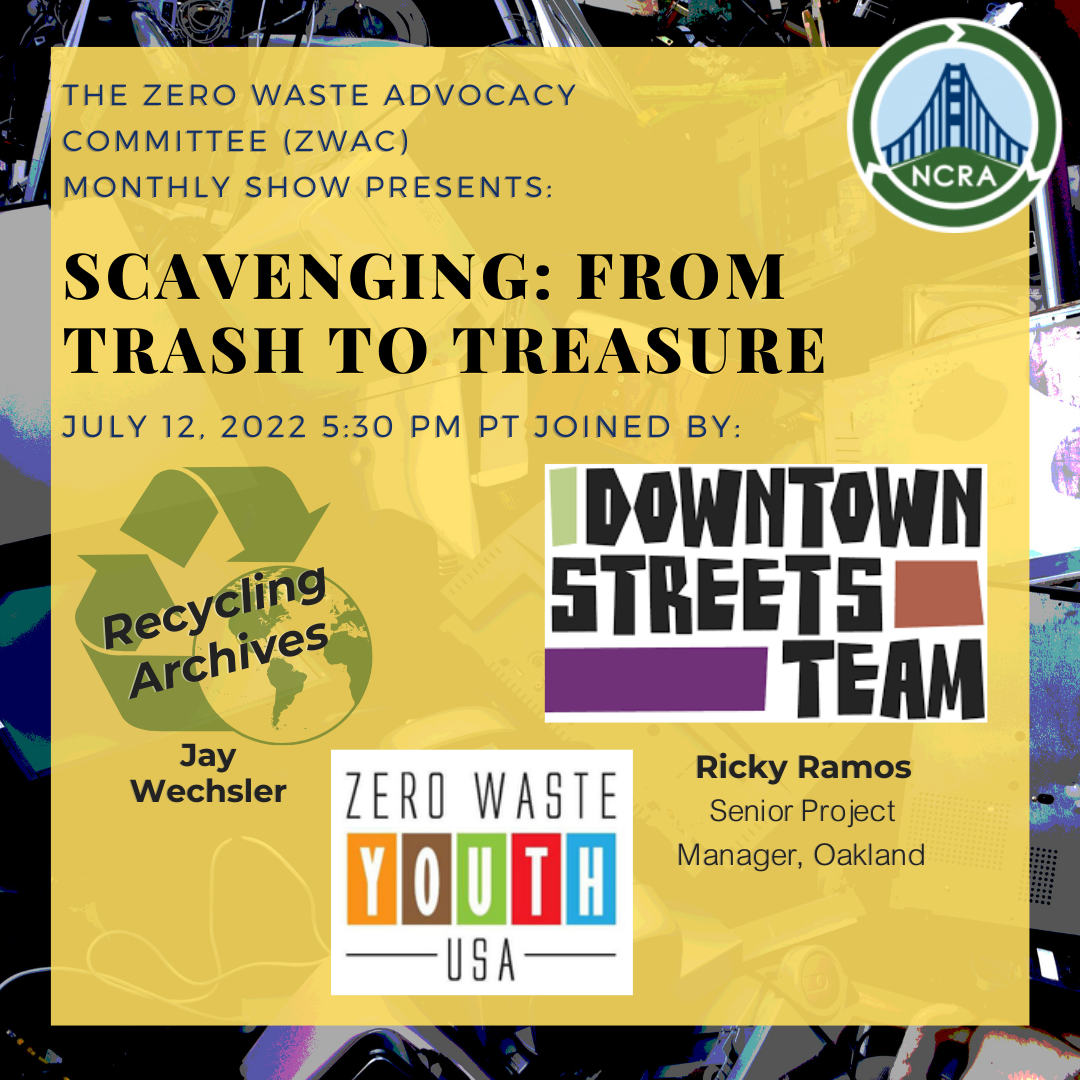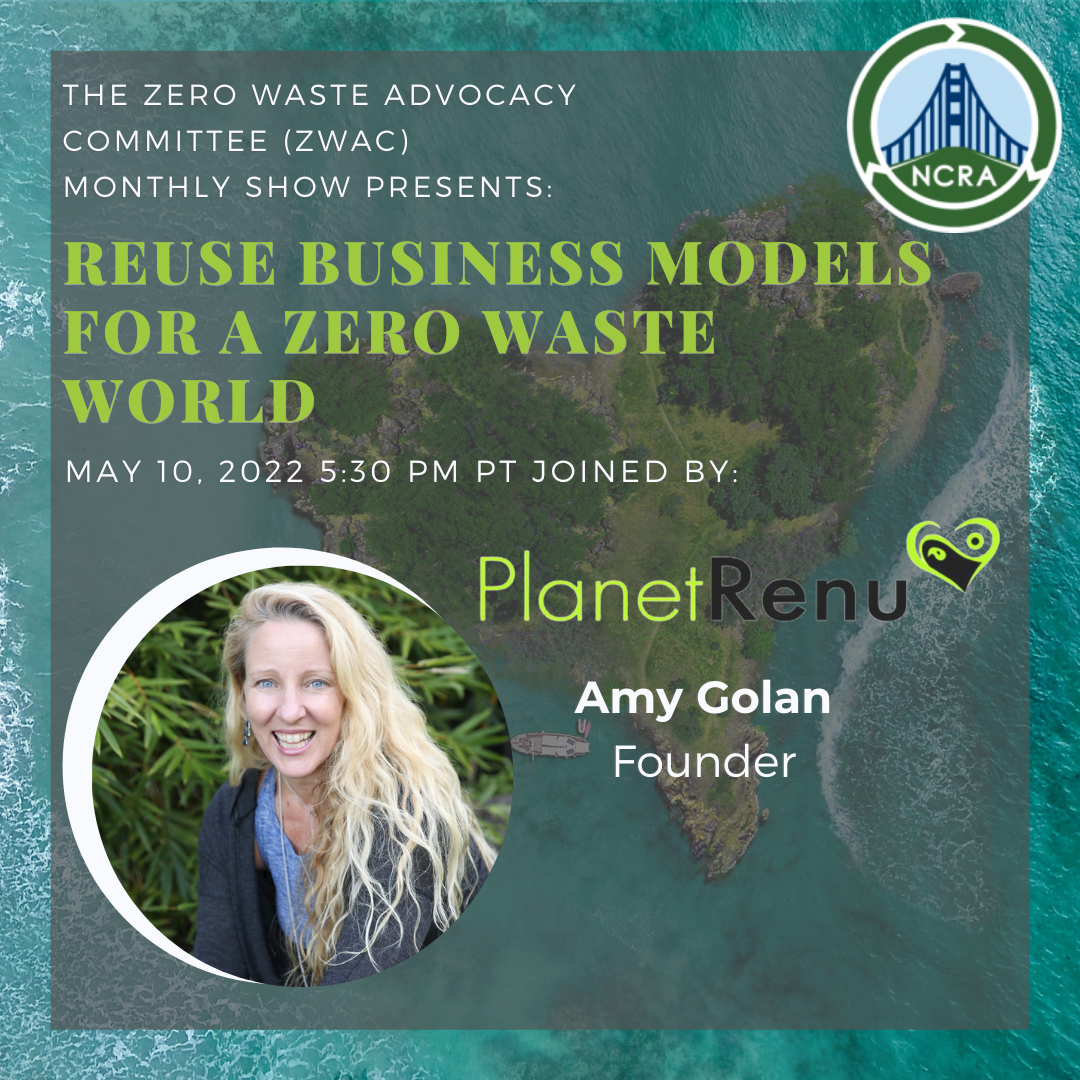LEGALLY SPEAKING, EPR IS NO PANACEA FOR CALIFORNIA’S TROUBLED CONTAINER DEPOSIT RECYCLING SYSTEM
The views expressed here do not necessarily represent or reflect the views of the Northern California Recycling Association.
By John Douglas Moore, Esq, NCRA Legal Counsel and Former Board Member
I’ve practiced law for forty years. I’m a board-certified litigator who has won all but three of my cases that went to trial. But I’ve also served as general legal and trial counsel to three public agencies and one $150 million per year retail chain, as well as many other businesses. I have attended hundreds of corporate board meetings and many government closed sessions.
I have observed violations of the Brown Act in the biggest as well as the smallest jurisdictions in the Bay Area. I have dealt with state and local government regulation of businesses at all levels. I have reviewed several prominent cases that involved governments’ failures to regulate business consistent with legislation.
This experience has convinced me that Extended Producer Responsibility or EPR — as defined and advocated by proliferating pro-EPR entitles such as the Product Stewardship Institute — cannot achieve their own stated goals and purposes. That’s because local governments lack the financial resources to win against large corporate interests. Elected officials are subject to ever-shifting political winds over whom they choose to favor and what regulations they choose not to enforce. Staff must do as the elected officials decree.
EPR depends on government regulation and oversight to “level the playing field” for the participants, or so say EPR advocacy organizations. But this has not happened in the past and it will not happen in the future.
EPR originated in Europe, where burning garbage is common and is considered “recycling.” PSI’s website does not mention Europe or burning garbage. Yet one of PSI’s partners is Covanta, an incinerator company. And British Columbia, the Canadian province that has taken EPR the farthest, has a 300 ton per day incinerator in the aptly named town or Burnaby as part of it’s discard management system. Incineration doesn’t conserve valuable materials like real recycling does. Incineration destroys resources. The idea that burning is recycling is a lie. The Pro-EPR folks embrace the British Columbia experience, which puts the actual recyclers on the lowest level of the playing field and do not disavow incineration as recycling.
The Product Stewardship Institute (PSI), the California Product Stewardship Council (CPSC), the Product Policy Institute (PSI), and the newer National Stewardship Action Council (NSAC) have all adopted “principles” for how EPR programs must be established. Their chosen form of EPR is a “mandatory type of product stewardship.” This mandatory type of product stewardship requires, according to PSI,
“Government is responsible for ensuring a level playing field for all parties in the product value chain to maintain a competitive marketplace with open access to all, for setting and enforcing performance goals and standards, for supporting industry programs through procurement, and for helping educate the public. “
Government’s “responsibility” for “ensuring” a level playing field for “all parties” presumably includes the people and companies doing the actual work of recovering the products. To put the lie to economic justice for companies and workers recovering post-consumer goods for reuse or recycling, one needs to look no further than California’s failure to manage its own bottle bill, which is a form of EPR.
California’s bottle bill begins with the same kind of empty platitudes as those employed by PSI:
“It is the intent of the Legislature to encourage increased, and more convenient, beverage container redemption opportunities for all consumers. These redemption opportunities shall consist of dealer and other shopping center locations, independent and industry operated recycling centers, curbside programs, and other recycling systems that assure all consumers, in every region of the state, the opportunity to return beverage containers conveniently, efficiently, and economically.”
Moreover:
“It is the intent of the Legislature to ensure that every container type proves its own recyclability. It is the intent of the Legislature to make redemption and recycling convenient to consumers, and the Legislature hereby urges cities and counties, when exercising their zoning authority, to act favorably on the siting of multimaterial recycling centers, reverse vending machines, mobile recycling units, or other types of recycling opportunities, as necessary for consumer convenience, and the overall success of litter abatement and beverage container recycling in the state.”
And furthermore:
“The purpose of this division is to create and maintain a marketplace where it is profitable to establish sufficient recycling centers and locations to provide consumers with convenient recycling opportunities through the establishment of minimum refund values and processing fees and, through the proper application of these elements, to enhance the profitability of recycling centers, recycling locations, and other beverage container recycling programs.”
Lastly:
“The responsibility to provide convenient, efficient, and economical redemption opportunities rests jointly with manufacturers, distributors, dealers, recyclers, processors, and the Department of Conservation (now CalRecycle).”
Does the Bottle Bill as written and passed by the California legislature actually create a “level playing field?” No, it does not!
The redemption centers that were promised by the bill to be “profitable” were instead locked into an exploitative statutory compensation scheme that was based upon outdated economic models. The last two years’ legislative sessions ended with no more money to the redemption centers, whose employees do the work of recycling. Hundreds of redemption centers were closed and thousands of recycling jobs were lost.
Just one chain — Re-Planet — closed 600 locations and laid off 1000 employees after the state starved them out. In the last five years, the number of redemption centers has fallen by over one third, resulting in “recycling deserts” in many parts of the state. Consumers today have far fewer places to go to “get their nickel back” from CRV deposits.
Why would this be allowed to happen when the Bottle Bill promises consumers “in every region of the state, the opportunity to return beverage containers conveniently, efficiently, and economically”?
Many consumers with no other recycling options will ultimately place their containers into their curbside collection carts that are picked up by franchised waste haulers. So the waste haulers end up getting paid deposit fees by the state for the CRV, not the consumers. Some waste haulers are in fact supporters and allies of PSI, as evidenced by PSI’s “partnership” with the Solid Waste Association of North America (SWANA) and Waste Management Inc. (WMI).
Some critics of the bottle bill believe that the regulator, CalRecycle, is underenforcing the obligations of beverage distributors to pay into the fund that is supposed to make the system work. Grocery chains required by the bill to provide consumers the ability to claim the redemption money can opt out of the system entirely by paying $35,000 per year. Most that can, do. This further limits the ability of consumers to find locations to obtain CRV redemption.
Meanwhile, CalRecycle is sitting on a surplus of unclaimed CRV deposits in the tens of millions of dollars.
Examples are easy to find of local government’s inability to enforce regulations against businesses that possess limitless lawyers and resources:
-
- When the City of Oakland rejected the bid of Waste Management of Alameda County (WMAC) for a long term solid waste franchise, WMAC sued the City of Oakland. With a school system in bankruptcy, a police department paying for a federal-court appointed monitor, a bloated obligation to pay union pensions, and rampant homelessness, the City of Oakland lacked the resources to fight WMAC’s lawsuit. They folded. WMAC ended up with the franchise.
- When local jurisdictions began passing plastic bag bans, the plastic bag makers and their petrochemical allies filed CEQA lawsuits against the government entities, which cost a lot of time and money to defend. Most local jurisdictions who got sued, like Oakland, folded. When the City of Manhattan Beach finally stood up for itself and won the CEQA case against it, plastic bag bans became more common, setting up even more battles in the state legislature and then before the voters.
- Ask any city attorney or elected official that you know what it would take for them to want to sue a Waste Management. Inc. for not fulfilling contractual obligations, or sue a Coke or Pepsi megacorporation who leave a trail a plastic pollution in parks, public waterways, and stormwater systems, or sue Safeway for not providing CRV redemption opportunities as promised by the legislature.
I can only say, having litigated against large corporations represented by big law firms, that big businesses ignore local regulation when they can, because they can. They can outlast almost anyone who stands up to them.
Besides having more resources, big businesses are also better at playing politics. Franchised waste haulers are an entrenched part of local government’s obligation to keep garbage off the streets. The waste haulers work daily with local regulators in the common cause of “cleanliness” and “Zero Waste.”
The waste haulers contribute to civic projects and the campaigns of the elected officials that supervise them. In this close relationship, local government staff are ill-suited for aggressive regulation of waste haulers. The recyclers — the companies whose employees actually recover resources, not just “manage” them — are not on a level playing field with waste haulers.
Why would an EPR promise of “level playing fields” not be just as hollow?
NCRA secured a victory in court to uphold a voter-passed Solano County law limiting the import of garbage into the county. Cheap tipping fees in the county were reducing recycling and increasing air pollution because garbage was being imported from as far away as San Jose! Solano County government never tried to enforce the import limiting law and the Superior Court upheld the law over the 3-2 opposition of its Board of Supervisors. But after the court case was decided, waste haulers paid a lot of money to then assemblyperson Fiona Ma to intervene in the haulers’ favor. Fiona Ma’s law undoing the court decision was passed without any public hearings about the effects.
What do you think?
# # #





















